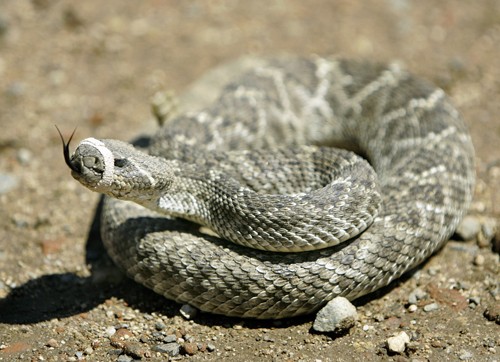A research team from the UA is examining the effect human-made barriers have on DNA structures from a main predator species in the Southwest desert — the rattlesnake.
“”Rattlesnakes are a key predator species of the Southwestern desert,”” Pozarowski said. “”If we find that these roads have a huge impact on the population structure, then maybe we can find a way to minimize that.””
The project is examining possible genetic differences in three populations of rattlesnakes, said Krystyn Pozarowski, a biochemistry and molecular biophysics senior. The three populations — the Western diamondback rattlesnake, the sidewinder, and the Mojave rattlesnake — are located in different areas between Interstate 10 and a nearby water canal, team members explained.
“”The rattlesnake populations we are studying are divided by human-made barriers,”” Pozarowski said. “”We are trying to see if there are any changes in the DNA structure caused by this separation.””
However, this research study is much more hands-on than it seems, to actually capture a rattlesnake is a unique challenge, said Pozarowski.
First, the team must search for a rattlesnake for sometimes hours on end. When a snake is actually spotted, a more dangerous process must take place — the capture.
Using their snake-stick — a long pole with a pincher at the end — team members grab the snake and hold it in place. Once the snake is in place, the team will “”tube-it””, or place it into a clear, long tube.
The tube makes it easy to take blood samples and measurements of the snake, Pozarowski said. After they get their blood sample, the snake is gently released back into the wild.
So far the team has taken about 100 DNA samples from all three populations, and with the help of collaborators, the count is now at 150. The process of collecting blood samples will continue for the next year, a team member said.
The rattlesnake populations used in the study are by no means endangered, explained Hans Werner Herrmann, assistant staff scientist at Arizona Research Labs and faculty advisor to the study.
The team took into account strong population sizes when choosing which populations to study because they would provide strong statistical information, he said.
Members say they have been working on the project for about two years, and it will probably be another year until they can see a lot of DNA structure within and outside of these populations.
Although they have not drawn any strong conclusions just yet, the team hopes to examine potential human-made hazards so conservationists can help the populations of the species.









